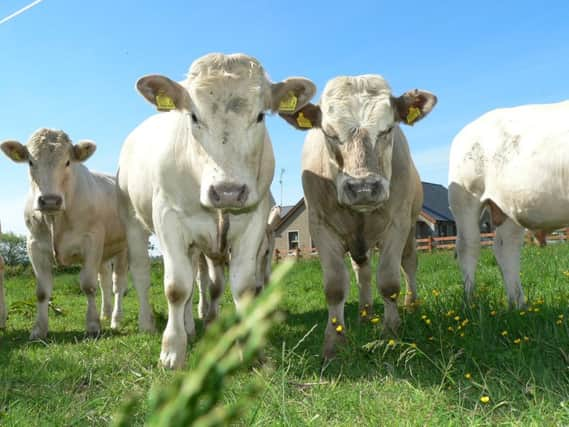Union receives updates on the BVD scheme


Figures published at the end of June showed that, over 16,250 breeding herds have now joined the scheme (of which more than 10,800 have joined since March 2016). As a result, over 633,000 animals have had their BVD status directly assigned (more than 215,750 since March 2016) and over 355,000 dams have had their BVD status indirectly assigned.
As a result of this effort, over 1,420 animals have been identified as being BVD positive (0.66% of all animals tested) with a herd prevalence of 6.4% since the start of the compulsory testing phase of the scheme. At this stage, 98% of herds affected have less than four PI calves, with over 60% of positive herds having only one PI animal.
Advertisement
Advertisement
Early indications are that most farmers are quickly removing these PI animals. However, continued effort is required to inform a small minority of farmers of the risks involved to their own herds (and others) if they choose to hold onto persistently infected (PI) calves. It is important to re-emphasis that PI animals are the primary source of infection within the herd as they will continue to produce vast quantities of the virus for the remainder of their life.
In comparison transiently infected animals will produce virus for up to approximately three weeks during which time the animal is more susceptible to a wide variety of other diseases. Should you opt to keep a PI animal, you are choosing to jeopardise the profitability of your own business as infection with BVD virus (persistent or transient) will cause issues with diarrhoea, poor food conversion resulting in reduced weight gain or milk yield, reduced fertility and abortions, and reduced immunity which will increase the likelihood of animals becoming infected with other diseases which will thereby increase veterinary bills in the future.
Current estimates suggest that BVD annually costs the NI cattle sector more than £20 million per year due to these additional costs and the current cost/benefit of eradicating the disease from an infected herd is 1:14 in dairy herds and 1:5 in beef herds.
At the meeting, the UFU raised members’ concerns over the length of time some results are taking to come back to members and the issues that this causes on farm. In response, AHWNI informed the committee that at this stage over 95% of results (204,962 results since March) have been returned to the farmer within seven days of receipt by the lab. However, 5% taking more than seven days to return, still means almost 11,000 results that took more than a week to get back to the farmer and AHWNI are working hard to reduce this delay.
Advertisement
Advertisement
There are several reasons why a number of these results may be delayed. As with all initiatives of this scale, there will always be some early teething issues, and when you consider that the scheme has seen a 200% increase in the number of herds participating since March, the committee appreciate the task being faced by AHWNI staff. At this stage, some early issues in relation to database uploads have now been addressed with various testing labs. However, during the recent merger of some associated business IDs, some results have not automatically been sent out by the database.
If you believe this could be affecting your results, farmers are advised to contact AHWNI as soon as possible by phoning 02879639333. Additionally, some farmers are continuing to underpay the required postage for their packages which is resulting in samples not being delivered to the labs. AHWNI would like to remind farmers that the minimum postage for up to 10 ear notch samples is a large stamp (96p to a UK laboratory).
If you are unsure of the appropriate postage, you are advised to check at the Post Office counter. Furthermore, at this stage AHWNI only have mobile phone numbers for 67% of herds in the scheme. As a result, AHWNI staff are being forced to send out up to 800 letters per day (most of which are negative results).
This process adds at least three days until farmers are informed of their results, adds considerable cost to the scheme, and uses up AHWNI staff time that could be better spent following up results that are overdue for genuine reasons and need to be investigated. If you haven’t already nominated a mobile number to AHWNI, all parties would ask you to call the office and provide AHWNI with a mobile number to make this process more efficient. Alternatively, herd owners can access all test results for their animals by logging onto the AHWNI database at www.animalhealthni.com and using your government gateway ID and password.
Advertisement
Advertisement
The meeting also offered an opportunity for AHWNI to present results of the BVD eradication scheme in the Republic of Ireland since 2013. Since the beginning of the scheme in ROI, the number of PI animals has fallen from 13,868 (0.66%) to 2,728 (0.15%) and the number of positive herds has fallen from 9,479 (11.27%) to 1,909 (2.65%) and ROI has now registered over 59,500 herds with BVD negative status.
These results show the considerable progress being made towards BVD eradication in ROI and demonstrate what can be achieved by the programme’s methods in Northern Ireland if everyone in the industry has the drive to make a concerted effort to eradicate this disease.